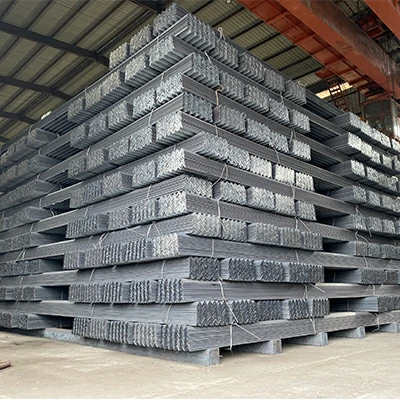The thickness of an angle bar is typically measured before and after the manufacturing process using various methods.
Here’s an overview of how the thickness is measured at different stages:
Before the Angle Bar Process:
- Raw Material Inspection:
- The thickness of the raw material (steel billet or sheet) is measured during the incoming inspection process. This measurement ensures that the starting material meets the specified thickness requirements before it undergoes further processing.
During the Angle Bar Manufacturing Process:
- Rolling Mill:
- In the rolling mill, where the raw material is shaped into the angle bar, thickness measurements are often taken using sensors or gauges. These devices provide real-time feedback to control the rolling process and ensure that the angle bar is being formed to the desired thickness.
- Inline Gauges:
- Inline thickness gauges may be installed along the production line to continuously monitor the thickness of the angle bar during rolling. This helps in making immediate adjustments to maintain the desired thickness.
After the Angle Bar Process:
- Offline Thickness Measurement:
- Once the angle bars are formed, offline thickness measurements are taken using tools like calipers or micrometers. These measurements are typically taken at various points along the length of the angle bar to ensure consistency.
- Ultrasonic Thickness Testing:
- Ultrasonic testing can be employed to measure the thickness of the angle bar non-destructively. China Angle bar factory Ultrasonic waves are sent through the material, and the time taken for the waves to reflect back is used to calculate thickness.
- Calibrated Gauges:
- Calibrated gauges, such as digital or mechanical thickness gauges, can be used to measure the thickness of the angle bar accurately. These gauges are placed at specific locations on the angle bar to obtain measurements.
- Quality Control Sampling:
- Random samples of angle bars are often selected for more detailed quality control, including thickness verification. These samples may undergo more comprehensive testing to ensure they meet the specified thickness requirements.
- Standard Compliance:
- Manufacturers ensure that the thickness of the angle bars complies with industry standards and specifications. These standards define the acceptable tolerance levels for thickness, and angle bars must meet these standards for quality and consistency.
- Documentation:
- Thickness measurements are recorded and documented as part of the quality control process. This documentation provides a traceable record of the thickness measurements for each batch of angle bars.
By employing a combination of inline and offline measurement techniques, manufacturers can ensure that the angle bars produced meet the specified thickness requirements. Regular quality control and adherence to industry standards contribute to the consistent and accurate measurement of thickness before and after the angle bar manufacturing process.
